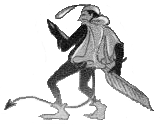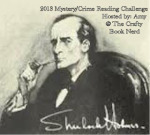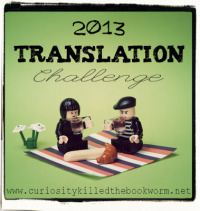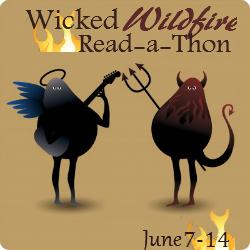Katherine Nabity's Blog, page 229
June 25, 2013
The Last Greatest Magician in the World
Here is the seminal biography of the magician’s magician, Howard Thurston, a man who set the standard for how stage magic is performed today.
Everyone knows Houdini–but who was Thurston? In this rich, vivid biography of the “greatest magician in the world,” celebrated historian of stage magic Jim Steinmeyer captures the career and controversies of the wonder-worker extraordinaire, Howard Thurston.
Thurston’s story is one of the most remarkable in show business. During his life, from 1869 to 1936, he successfully navigated the most dramatic changes in entertainment–from street performances to sideshows to wagon tours through America’s still-wild West to stage magic amid the glitter of grand theaters.
Steinmeyer explores the stage and psychological rivalry between Thurston and Houdini during the first decades of the twentieth century–a contest that Thurston won. He won with a bigger show, a more successful reputation, and the title of America’s greatest magician. In The Last Greatest Magician in the World, Thurston’s magic show is revealed as the one that animates our collective memories. (via Goodreads)
Houdini. Houdini, Houdini, Houdini. If I asked you to name one non-contemporary magician (i.e., not Criss Angel, David Blaine, Penn & Teller, or even David Copperfield; in other words, a long-dead magician), Houdini would probably be who you’d name. Harry Houdini masterfully built his own legend on a basis of spectacle, controversy, and no small amount of talent as an escape artist. If I were to ask you to describe the prototypical old-timey magician, you might think of a man in white tie and tails, dignified yet amusing, pulling a rabbit from a hat, levitating a princess, or maybe chastely sawing a lady in half. That magician that you’re thinking of? That’s Howard Thurston.
In Hiding the Elephant, Jim Steinmeyer presented the history of stage magic through the lens of one trick. In Last Greatest Magician, he turns his focus to tell the story of Howard Thurston, warts and all. As a young man, before he delighted kids and parents with magically-produced bunny rabbits, Thurston hopped trains and conned people into buying fake watches until he was caught and put into reform school. He was married three times. He was absolutely terrible with money. Like many front-men, he was not the architect of his more elaborate tricks.
Where he excelled was on the stage. He was charismatic performer with a minister’s voice. He had a sense for putting on a memorable show, even if he suffered from the-bigger-the-better syndrome late in his career. He was incredibly adept at close-up magic and could “sell” an apparatus better than anyone else. Behind the scenes, he bought the best tricks and hired some of the best engineers to shore up weaknesses. Magic is an industry reliant keeping secrets and obtaining them. Thurston was shrewd and more than occasionally conflicted about decisions he made to keep his business afloat.
Jim Steinmeyer gives Thurston all his shades of gray and writes about the man and the magic with the same palpable love that oozes from Hiding the Elephant. Thurston’s story would make a great AMC / History channel series. While this isn’t a “reveal” book, the secrets behind some magic tricks are discussed. As a designer and inventor, Steinmeyer doesn’t shy away from nuts and bolts when telling his stories.
History is all about who gets remembered. Many, many other magicians have pulled rabbits from hats and made ladies float. Even Houdini did some of these tricks though, by most reports, not very well. Despite invoking Houdini’s name to give Thurston some street cred with modern audiences, it’s Thurston who has given us the cultural memory of “magician.”
As for the rivalry between Houdini and Thurston? It’s there. The two exchanged many letters. Houdini had a mercurial personality and was always in conflict with someone, and usually someone notable. If the general public remembers Thurston in relation to Houdini, there are worse things. If I’ve learned one thing about magic, it’s that it’s a continual narrative. Every magician, every trick, every performance is the sum of its history and often defined by its associations and lineage. It’s a concept that is very appealing to me.
Genre: Non-fiction. Biography.
Why did I choose to read this book? Research! But also because I find that I really enjoy Jim Steinmeyer’s writing and magic history.
Did I finish this book? (If not, why?) Yes.
Format: Trade paperback.
Procurement: Won from Take Control RAT raffle!
Bookmark: Yellow note card with notes from my current project on it. Well, pre-rewrite notes.
Related to my current writing project and as a further example of defining by association, this is an anecdote related by Jim Steinmeyer in an article about the magician Joseffy:
Joseffy was once asked to present [Balsamo, The Living Skull] to Howard Thurston and his staff. He obliged, placing the skull on a table between Thurston’s knees. “You’re not going to work it this close?” Thurston asked.Joseffy nodded.
“But I am Thurston!”
“Yes, but I am Joseffy,” the wizard responded.
(Jim Steinmeyer. Magic. September 1999, Vol. 9, No. 1. pg. 46)


June 22, 2013
Saturday Cinema ~ Much Ado About Nothing (2012)
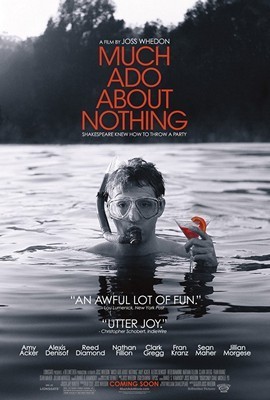 Much Ado About Nothing (2012) – Directed by Joss Whedon, Starring Amy Acker, Alexis Denisof, Fran Kranz, and most of the rest of the Whedon Universe.
Much Ado About Nothing (2012) – Directed by Joss Whedon, Starring Amy Acker, Alexis Denisof, Fran Kranz, and most of the rest of the Whedon Universe.
Yesterday, we trekked up to Scottsdale to watch Much Ado on the only screen where it’s showing in the Phoenix metro (at the moment, that I know of; here’s hoping for a wider release later in the year). Much Ado About Nothing is my favorite Shakespeare comedy. Joss Whedon is one of my favorite directors. There was no way I wasn’t going to like this movie.
Filmed on location in his home during a break while editing Avengers, Whedon puts together a pretty good film. Shot in black and white, it exchanges the Italian providence of Messina for a palatial Santa Monica home. The house’s architecture and the surrounding property is put to excellent use. I was amused by how many early scenes were shot in the kitchen. After all, isn’t that were most parties end up? The adaptation mostly pulls off a modern setting while retaining the language of the play in a slightly abridged version. Don John and his cronies arrived zip-tied. Why? It doesn’t matter. Shakespeare never explains either aside from Don John being “a plain-dealing villain,” played with proper malevolence by Sean Maher.
Beatrice and Benedick’s past is more explicitly illustrated to give their current sparring more weight. This mostly works. I found Alexis Denisof’s Benedick a little uneven. His shift from lady-killer to love’s fool is maybe too extreme. Both Kenneth Branagh and David Tennant (in the adaptations I’ve seen) give Benedick a more inherent ridiculousness that makes the character’s shift more natural. I have to give Denisof credit though for doing his Act 2, scene 3 soliloquy while on a morning jog.
 In general, Whedon’s adaptation is less jolly than Kenneth Branagh’s 1993 film or Josie Rourke’s 2011 stage adaptation (available through Digital Theatre). Denisof and Amy Acker have some nice physical comedy moments, but other than the eavesdropping scenes, they are both somewhat staid. Nathan Fillion’s Dogberry is the most reserved I’ve seen; I could have done with a touch more 80s super-cop from him and Tom Lenk as his sidekick Verges. The standout of the cast for me was Clark Gregg’s Leonato. Without even a on-stage, but mostly non-speaking wife/mother (like in Rourke’s presentation), Gregg’s Leonato and Jillian Morgese’s Hero have an us-against-the world feel about them; that maybe Leonato was wronged by his wife, leaving him to bring up his daughter as best he could. When Hero is accused, Gregg’s Leonato is first disappointed and then angry, and it’s this disappointment that breaks Hero’s heart. At least that’s my take on it. It could be that I’m indulging in a little to much extra reading into the performance.
In general, Whedon’s adaptation is less jolly than Kenneth Branagh’s 1993 film or Josie Rourke’s 2011 stage adaptation (available through Digital Theatre). Denisof and Amy Acker have some nice physical comedy moments, but other than the eavesdropping scenes, they are both somewhat staid. Nathan Fillion’s Dogberry is the most reserved I’ve seen; I could have done with a touch more 80s super-cop from him and Tom Lenk as his sidekick Verges. The standout of the cast for me was Clark Gregg’s Leonato. Without even a on-stage, but mostly non-speaking wife/mother (like in Rourke’s presentation), Gregg’s Leonato and Jillian Morgese’s Hero have an us-against-the world feel about them; that maybe Leonato was wronged by his wife, leaving him to bring up his daughter as best he could. When Hero is accused, Gregg’s Leonato is first disappointed and then angry, and it’s this disappointment that breaks Hero’s heart. At least that’s my take on it. It could be that I’m indulging in a little to much extra reading into the performance.
This is the most Wheadon-y Shakespeare possible. All of Joss Whedon’s TV series contain labyrinthine and melodramatic love stories and that’s what Much Ado About Nothing has in spades. While it’s not may favorite adaptation of the play, I enjoyed myself.


June 21, 2013
Adventures of the Writerly Writer ~ The First 5K…Again
Pop open a beer. I’ve drafted 5000 words on this novel…for the third time.
It’s been quite a week, writing-wise. I woke up last Saturday after not quite reaching the 25K mark on One Ahead and realized that my discontent with the story was not abating. I had written just over 44,000 words for NaNoWriMo knowing that a NaNoWriMo novel bares only passing resemblance to any actual novel. It would need a lot of work.
I took two months off from the project to finish up Luck for Hire and get it in submittable shape. In February, I continued to do research, and started restructuring and rewriting. That draft got to 14K. There was still something lacking. So, I added a character–Joseffy–in my then biggest deviation from history. That added about 10K to that draft, including a complete rewrite of a couple chapters that had no Joseffy in them. There are a few scenes in that draft that I really, really like. But still, the story I was telling was not the story I wanted to tell.
Last Saturday, I started over. I brainstormed a plot with Eric and we came up with something pretty good, but different than what I had before. Even the title, One Ahead, doesn’t really fit anymore. The full title from NaNo times was One Ahead Without Leaving the Parlor. David Abbott is certainly leaving the parlor in this new iteration. In fact, he goes to Iowa in chapter one.
Magicians of the world, forgive me. I’ll try to it all justice.


June 18, 2013
Cemetery Lake
A fast-paced crime thriller from the author of international bestsellers The Cleaner and The Killing Hour, Cemetery Lake will keep you guessing until the last page.
What began as a routine exhumation of a suspected murder victim quickly turns complicated for private investigator Theodore Tate . . .
Theo Tate is barely coping with life since his world was turned upside down two years ago. As he stands in the cold and rainy cemetery, overseeing the exhumation, the lake opposite the graveyard begins to release its grip on the murky past. When doubts are raised about the true identity of the body found in the opened coffin, the case takes an even more sinister turn. Tate knows he should walk away and let his former colleagues in the police deal with it, but against his better judgement he takes matters into his own hands.
With time running out and a violent killer on the loose, will Tate manage to stay one step ahead of the police, or will the secrets that he thought were so deeply buried be unearthed? (via Goodreads)
Paul Cleave is from the other side of the pond. The big pond. The New Zealand author’s novels are happily getting more attention lately in the US with Atria Books’ re-release of his catalog. Cemetery Lake, Cleave’s third novel, was originally published in 2008 and is the first of three novels (thus far) that feature cop-turned-private-detective Theo Tate.
Roughly, there are three aspect to this novel which for me worked in varying degrees. I’ll address them in reverse order.
The first is the setting. All of Cleave’s novels are set in Christchurch, New Zealand. Being a native, he obviously knows the area well. It offers an interesting combination of urban, suburban, and wilderness areas. Unfortunately, when Tate laments that Christchurch is “broken,” I don’t quite believe it. Sure, there are loopholes in the justice system. There is corruption. Is it any worse than any other big city? I’m not sure that it’s shown to be. I could be jaded. It might also be that Cleave’s first two novels, also set in Christchurch, better illustrate the ideal versus the (fictional) reality of the city. Perhaps by Cemetery Lake, the idea has become more of a trope that readers of the first books understand better than a novice Cleave/Christchurch reader.
Secondly, there’s the plot. It careens along. It takes hard left turns and doubles back on itself. It goes places that have no in-roads. On one hand, I found myself vowing to take a break from reading at the end of a chapter only to find that I’d read far into the next without realizing it. On the other hand, occasionally I found myself really questioning Tate’s decisions. I had to turn a blind eye to the possibility that the character might be acting in the best interest of a plot twist. And I was willing to do this because…
Theo Tate is a great character. The man has problems, and maybe it’s to Cleave’s credit that Tate doesn’t always make the best decision. I have a soft spot for characters that are doing the best they can given their circumstances, even if they’re suffering from the consequences of their own poor judgement. I want to read more of Theo Tate. It’s been a while since I’ve encountered such a well drawn flawed hero.
Cemetery Lake will be released by Atria Books on June 18, 2013. (Hey, that’s today!)
Genre: Mystery/Thriller
Why did I choose to read this book? By a New Zealand author.
Did I finish this book? (If not, why?) Yes. A great read.
Craft Lessons: Don’t be afraid to take a hard left, plot-wise. Just make sure it’s warranted.
Format: Kindle ebook
Procurement: NetGalley


June 11, 2013
The Elder Eddas of Saemund Sigfusson; and the Younger Eddas of Snorre Sturleson
Saemund Sigfusson is credited with The Elder Eddas, a collection of poems dating from the Tenth and Eleventh centuries, many of them only fragments of longer heroic chants now otherwise entirely lost. Collected from oral tradition, the same story is occasionally repeated in varied form. Some of the poems prove that the collection is only a gathering made early in the middle ages, long after the composition of the pieces, and in no critical spirit. Snorre Sturleson, was the writer of Younger Edda or Snorri’s Edda, the Icelandic manual of poetics which contains many stories from Norse mythology. Its purpose was to enable Icelandic poets and readers to understand the subtleties of alliterative verse, and to grasp the meaning behind the many kennings that were used in skaldic poetry. It consists of seven manuscripts, dating from around 1300 to around 1600, which have independent textual value. (via Goodreads)
My first exposure to mythology of any kind was probably through the works of Ray Harryhausen. If not Jason and the Argonauts, then Clash of the Titans. I bolstered my knowledge of “the classics” with my own reading until I got to high school and college whereI was formally introduced to Greek and Roman mythologies. Norse mythology really isn’t taught as part of “the classics.” (Neither are any of the other world mythologies.) Being from the central plains of the US, this is maybe a disservice. My culture is not one born of a cushy climate. While Greek and Roman myths carry some commonalities, they are more for southern children, as Foster and Cummings point out.
One of the things that struck me reading the Edda translations, over the easy-reading stories presented by the Foster and Cummings, was that the stories and myths are about collecting information. While its probably a convention of this oral tradition to ask and answer questions, even the basic myths are based around gaining knowledge. Odin loses an eye for knowledge. The wheres and whys of things are important for survival.
Much of the Poetic Edda was over my head. Poetic conventions combined with very unfamiliar territory made for a very superficial reading at this point. I’ll probably give it a reread in a few years, assuming that I follow up on becoming more familiar with Norse myths.
Genre: Mythology
Why did I choose to read this book? Wanted to fill a gap in knowledge.
Did I finish this book? (If not, why?) Yes.
Craft Lessons: Remember that where a character is from influences what stories they tell and relate to.
Format: Kindle ebook
Procurement: Free Kindle ebook


June 3, 2013
Doctor Who: Prisoners of Time Volume 1
November 23, 1963: A day that changed the world forever.
That day saw the broadcast debut of Doctor Who, which was to become the longest-running science fiction series on television.
And now, 50 years later, we pay tribute to one of the greatest pop-culture heroes of all time with this special series, which tells an epic adventure featuring all 11 incarnations of the intrepid traveler through time and space known simply as… the Doctor. (via IDW Publishing)
The volume I received for review contained the first three issues of IDW’s Doctor Who: Prisoners of Time series. Each issue features one of the previous incarnations of the Doctor quickly solving a problem. The overarching plot involves a cowled figure “stealing” each Doctor’s companions with the help of a vortex manipulator. As a fan of the television show since its continuous rerunning on my local PBS station in the 80s, I’m familiar with all the Doctors, companions, and villains. The mini stories give each Doctor an opportunity to be the Doctor they are: One is the grandfatherly teacher, Two is the mischief-maker with a twinkle in his eye, and Three is the debonaire man-of-action. I found the art to be very good and especially enjoyed Three kicking butt back-to-back with Brigadier Lethbridge-Stewart. This is fun series for a veteran of Doctor Who, but I’m not sure that newer fans will get much out of it unless later issues bring in more contemporary faces.
This compilation is scheduled to be published by IDW on June 4, 2013
Genre: Speculative fiction
Why did I choose to read this book? Doctor Who fan, getting a little excited about the anniversary.
Did I finish this book? (If not, why?) Yes
Format: Highly watermarked Adobe Digital Edition
Procurement: NetGalley


June 2, 2013
Wicked Wildfire Read-a-thon 2013
Wicked Wildfire Read-a-thon hosted by My Shelf Confessions
The Wicked Wildfire Read-A-Thon is a time when we all get together to dedicate the days of June 7-14 to as much reading as possible. You read as much as you can in order to get yourself a little further through that huge to-read pile! We know real life gets in the way and even if you can’t participate more than one day, you’re welcome to join in on the fun!
Goals / Reading List
600 pages seems to be my lucky goal (at least according to my selective memory).



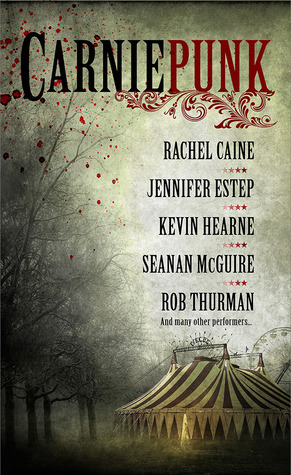
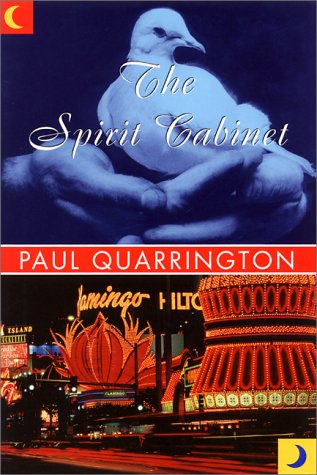
Finish Cemetery Lake by Paul Cleave, if I haven’t by Friday.
From the Land of Fear by Harlan Ellison, a short anthology.
Start Cobweb Bride by Vera Nazarian, the next ARC in my queue.
Maybe read a story of two from CarniePunk, another ARC.
Begin The Spirit Cabinet by Paul Quarrington, if nothing else is working out.
A couple of chapters of A Storm of Swords
(Subject to Change)
Progress


What Else in May
May did not reap the kick-ass 2nd draft word count that I hoped for. I did add a character, change a character, organize, and now have a (slightly) better idea where I’m going. Read Jim Steinmeyer’s Hiding the Elephant which has given me my best grasp on magic yet.
Query-wise, I kind of took May off. Some of the initial rejections for Luck for Hire were on the more personal side, but lately they’ve been depressing form letters. I just needed to take a break for a couple weeks. I’ll get back to it in June.
# of submissions for Luck for Hire: 3
# of responses: 0
# of submissions for Model Species: 0
# of responses: 2
Other Life Stuff
Kind of a down month for me. Got a lot of reading done during Bout of Books. Looking forward to Wicked Wildfire Readathon starting on Friday. I wasn’t going to do it, but… Who am I kidding? I totally was.
Women’s league started and I’ve been enjoying it more than I have in the past. That could be because, aside from a couple days two weeks ago, I’ve been feeling good physically. I’ve gone back to tracking my calories, this time using MyFitnessPal. I’d like to get back to comfortably wearing more than one pair of my jeans by September. What I really need is to get three days of good exercise in per week without killing my body. I’m going to try going to the pool this week.
 Books Obtained
Books ObtainedDavid Copperfield’s Beyond Imagination, edited by David Copperfield
David Copperfield’s Tales of the Impossible, edited by David Copperfield
The Spirit Cabinet by Paul Quarrington
Penn and Teller’s How to Play with Your Food by Penn Jillette & Teller
After doing a bit of Goodreads math, I realized that I own 435 books that I have not read. I need to keep the Obtained list shorter. It probably doesn’t help that I keep picking up ARCs from NetGalley.
Other Books I Want to Read
 Added to Goodreads:
Added to Goodreads:
Men, Women, and Chain Saws: Gender in Modern Horror Film by Carol J. Clover
Learned Pigs and Fireproof Women by Ricky Jay
The Lies of Locke Lamora by Scott Lynch
Falling to Earth by Kate Southwood
The Resurrectionist: The Lost Work of Dr. Spencer Black by E.B. Hudspeth
The Weeping Woman by Marcantonio, Patricia Santos
Masters of Mystery: The Strange Friendship of Arthur Conan Doyle and Harry Houdini by Christopher Sandford
The Ruining by Anna Collomore
Elephants in the Distance by Daniel Stashower
Penn & Teller’s How to Play in Traffic by Penn Jillette & Teller
Cruel Tricks for Dear Friends by Penn Jillette & Teller
Fifth Business by Robertson Davies
Memoirs of Robert-Houdin by Jean Eugene Robert-Houdin
Goldenland Past Dark by Chandler Klang Smith
It was a heavy month of adding books to my “Want to Read” list with Bout of Books and all.


June 1, 2013
Saturday Cinema ~ Magic Movies
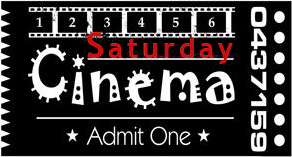
My life in the past few months has been a big Baader-Meinhof of magic. While I have been seeking out texts and other media related to magic, I’ve also been tripping over the subject. Here are a couple recent cinematic stumblings.
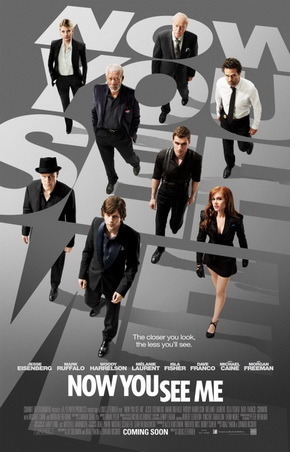 Now You See Me (2013) – Directed by Louis Leterrier, Starring Jesse Eisenberg, Mark Ruffalo, Woody Harrelson, Mélanie Laurent, Isla Fisher, and Dave Franco with Michael Caine and Morgan Freeman. I included the entire main cast there because just look at it. What a great cast!
Now You See Me (2013) – Directed by Louis Leterrier, Starring Jesse Eisenberg, Mark Ruffalo, Woody Harrelson, Mélanie Laurent, Isla Fisher, and Dave Franco with Michael Caine and Morgan Freeman. I included the entire main cast there because just look at it. What a great cast!
A few months ago when I first saw the trailer for Now You See Me, I was a little disappointed. This summer is filled with movies I want to see. Trying to scheme my way into one more seemed pretty unreasonable, not matter how magic-packed this film looked. (If my income were substantially higher or ticket prices were substantially cheaper, I’d go to the movies every weekend.) If it came out in September or October, well, I figured my chance of seeing it in a theater was better. Then Iron Man 3 happened. I am perhaps overly unhappy with that film and, in true over-reaction style, it’s put me off of big budget blockbusters for the moment. That’s not to say Now You See Me doesn’t have a budget (IMDB put it at $75 million), but I’ve come to appreciate any movie that can pull off effects and still stay under the $100M mark.
This is going to be a biased review. I like magic. I like heist films. Put the two together and I have a peanut-butter-and-chocolate situation. This is going to be something I like even if the ingredients aren’t that good. Or, to belabor the metaphor, even if the ingredients are great but in the wrong proportions.
The characters, mostly, are a lot of fun. The interplay between Woody Harrelson and pick-a-character-any-character is one of the movie’s stranger points. Michael Caine and Dave Franco aren’t given a whole lot to do other than being the rich English guy and the fourth wheel on the tricycle respectively. Mark Ruffalo is generally grumpy, Morgan Freeman is generally enigmatic, and Mélanie Laurent is generally French. Luckily, these are all things that these actors do well.
The plot felt like it could have been a little tighter and a little clearer. After the second bank robbery, there is a bit of a shift in the attitudes of characters and the feel of the movie that probably could have been explained. Then, of course, there’s the magic. By and large, the tricks seemed reasonable, but again, some of the details could have been cleaned up to make the movie stronger. For example, one illusion is done with mirrors. After reading Hiding the Elephant, yes, I can see how you *might* be able to do that with mirrors, but it would be a more complex thing. For me, it would have been cool if there had been some actual magic history worked into the plot, but I guess that’s why I’m writing the book I’m writing.
Now You See Me is not perfect. In fact, it’s far from perfect. But it is ambitious and non-franchise and I left the theater satisfied with how I had spent my money.
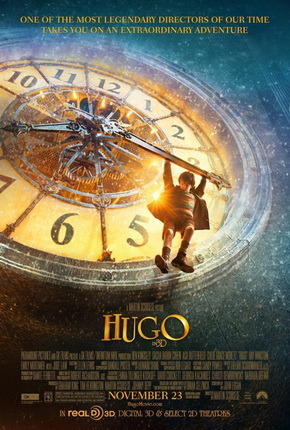 Hugo (2011) – Directed by Martin Scorsese, Starring Ben Kingsley, Asa Butterfield, and Chloë Grace Moretz.
Hugo (2011) – Directed by Martin Scorsese, Starring Ben Kingsley, Asa Butterfield, and Chloë Grace Moretz.
When this movie came out, I knew nothing about the book by Brian Selznick and thought it was an odd choice for Martin Scorsese to direct. It was a kid’s story. Set in France. No rock & roll. No New York. Actually, worse, I had a misconception about the story. I thought it was the sort of light, fluffy, middle-grade fantasy that was trying hard to be on the same level as Philip Pullman books with aspirations of C. S. Lewis.
I’m not unhappy when I’m wrong.
At the end of the 19th and in the early decades of the 20th century, there was a great interplay between magic and technology. After all, what is magic but giving an audience what they don’t expect to see or hear? This is exactly what radio, movies, and TV did. Hugo is a story that weaves together one of the technical props of late 1800s’ magic- –the automaton– -with the coming technology of the motion picture. Georges Méliès was a magician before he was first prolific writer, director, and actor of film. Once I realized what this story’s deep plot was about, the preservation of film history, of course it was a project that Martin Scorsese would direct!
It is a beautiful film. Near the beginning there is a patented Scorsese one-shot of Hugo moving through a giant clock at the Gare Montparnasse railway station. Let me repeat that. A one-shot. Through a clock. The acting is great. Ben Kingsley even looks like Georges Méliès. After seeing him a couple weeks before in Iron Man 3 (he is the best thing in that movie), I was reminded how good of an actor he is. Second best actor in this film: Chloë Grace Moretz. I hope she avoids all the nastiness of growing up in the movie industry and continues to give great performances no matter what she’s in. Sacha Baron Cohen is ridiculous, but the writing allows him to be more than a cartoon villain.
Hugo was considered a flop. It’s a slowly paced film about history. I can kind of understand why this didn’t tear up the box office. At an hour in, I was surprised that only an hour had passed. I wasn’t unhappy about that, but it made me do a double take. Adult me really liked this movie. Ten-year-old me probably would have liked it too because I’ve always been interested in special effects and movie history since The Making of ‘Star Wars’. For the general, movie-watching public? Don’t be afraid to get your feet wet with some historical fiction. Even if there are kids involved. This is a Martin Scorsese movie after all.


May 29, 2013
Penn and Teller’s How to Play with Your Food
Comic duo Penn & Teller share a wealth of characteristically twisted tricks involving edibles in this maliciously funny book. Anyone wishing to tie a cherry stem with one’s tongue or surreptitiously steal an appetizer from a dining companion’s plate would do well to study this invaluable text. (via Amazon & Publisher’s Weekly)
I was first exposed to Penn & Teller at a pretty young age. I don’t remember if it was a Letterman appearance that I caught on the sly, past my bedtime, or if I happened upon them on PBS on some random Sunday afternoon. I do remember that I was alone and that the trick involved some blood and gore and probably ended with a maimed/dead Teller. “What did I just see?” was my first thought. My second thought was that my suspicions were true: magicians just did tricks; none of it was “real.” Because if it were real, I’d have heard about this magician guy offing his assistants on a regular basis. It didn’t occur to me to check TV Guide for info (I must have been young indeed) and it wasn’t until years later that I encountered the duo again when I saw “Lift Off of Love” on TV.
I thought it was one of the best things ever. Then I promptly lost track of them until I became interested in skepticism and became curious about magic again. In fact, it was an article about Teller that led to Eric suggesting I write a historical fiction about David P. Abbott.
How to Play with Your Food is half magic trick instruction manual* and half collection of funny anecdotes with a dash of fiction, a pinch of science, and a good dollop of the skepticism that P&T has become most noted for. The tricks generally involve foods and/or beverages in some manner, sometimes using food *in* the tricks or sometimes using trick to scam food off your friends. Interestingly, I’m also currently reading Joshua Jay’s Magic: The Complete Course which deals with some of the same tricks, but not in nearly as entertaining a manner. Jay also goes out of his way to be sort of politically correct about magic. For him, they’re not tricks, they’re effects. Penn (presumably most of the writing, especially the loud writing, is his) has few qualms about telling it like it is. These are tricks, jokes, and lies.
Another thing that struck me is how some techniques of magic can be applied in different ways. The same techniques that mediums used in Abbott’s day (and that are probably still used today) can “predict” your friends’ orders at a restaurant. And, if you’ve caught Penn and Teller on TV a few times in the past ten years, you’ve seen the three-of-clubs turn up in all sorts of places. You’d think, knowing what punchline is coming, that tricks might get old; that knowing the secrets would take away from the fun. But it doesn’t. There’s one sort of fun for the first time and another for the twentieth.
* For the second time this week, if you don’t want to know how magic tricks are done, this might not be the book for you. Even if it is filled with secrets that are fun to know.
Genre: Non-fiction.
Why did I choose to read this book? Writing a book, research, yada yada…
Did I finish this book? (If not, why?) Yep, it was a short, quick read.
Format: Paperback. With all it’s footnotes and illustrations, I imagine it is not a Kindle slam-dunk.
Procurement: PaperbackSwap
Bookmark: Business card from Mercurial Musings
[image error]Apparently, it’s Magic Week on my blog. Yesterday, I had a review of Jim Steinmeyer’s fantastic Hiding the Elephant. Today, Penn & Teller. On Friday, Eric and I plan on seeing Now You See Me, a magic laden thriller starring Jesse Eisenberg (which I’m hoping I will be excited to blog about). Saturday Cinema is to hit some other magic movies, especially Martin Scorsese’s Hugo.




